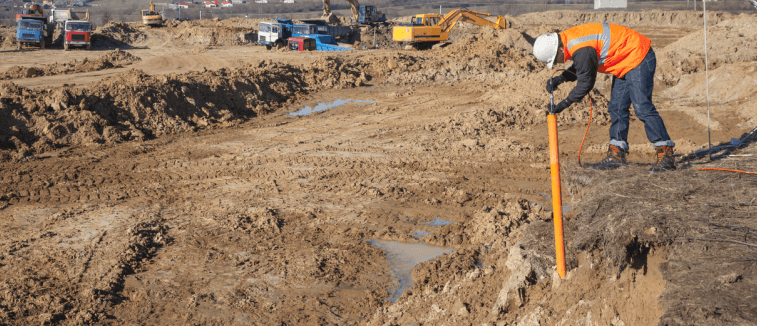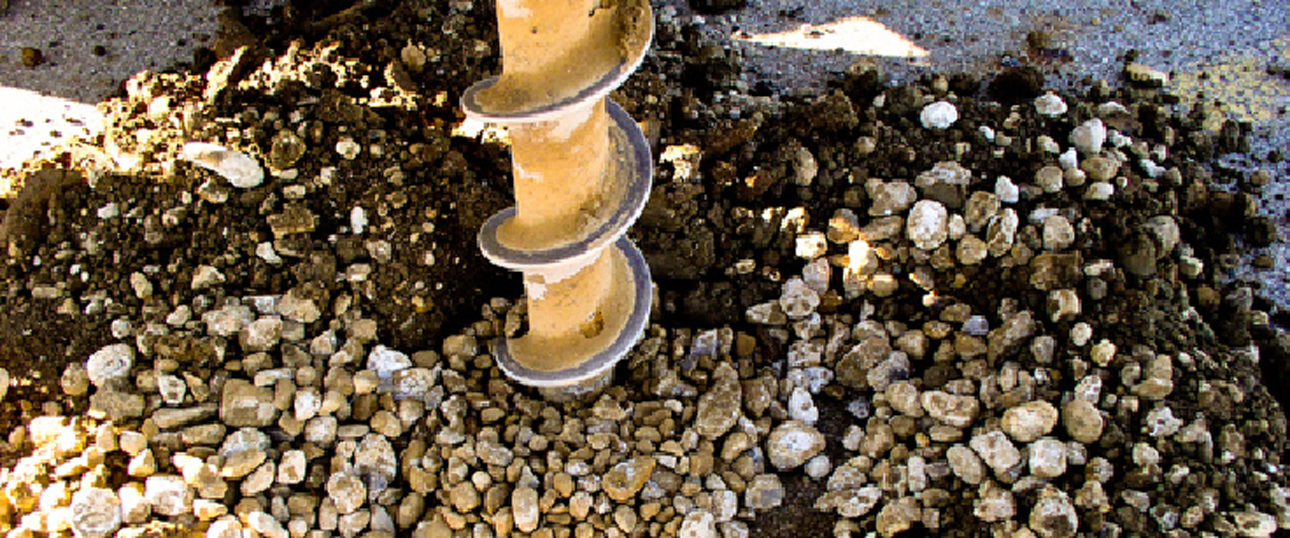Top Factors to Hire a Geotechnical Specialist for Your Construction Tasks
Top Factors to Hire a Geotechnical Specialist for Your Construction Tasks
Blog Article
An Extensive Introduction of Geotechnical Design Techniques and Their Influence on Modern Civil Engineering Projects
Geotechnical engineering acts as the backbone of modern civil engineering, supplying crucial strategies that address the complexities of subsurface conditions. The interaction of soil analysis, foundation design, and cutting-edge innovations shapes the stability and sustainability of infrastructure projects. As we discover these methodologies, it becomes clear how critical they are in mitigating prospective threats connected with construction. The implications of these methods expand past plain security; they additionally influence task efficiency and environmental factors to consider, raising crucial inquiries regarding future advancements in the field. What stays to be revealed is the transformative capacity of these technologies on urban development.
Value of Geotechnical Engineering
Geotechnical engineering functions as a crucial foundation for civil design jobs, influencing the safety and security and security of frameworks. This self-control concentrates on the habits of soil and rock materials, supplying essential insights that lead the layout and construction procedures. By comprehending the interaction between the planet and engineered structures, geotechnical designers can examine threats associated with ground conditions, such as negotiation, slope stability, and liquefaction.
The value of geotechnical design expands beyond mere structural integrity; it plays a crucial function in environmental management and sustainability. Properly carried out geotechnical analyses make certain that tasks lessen their ecological footprint and abide by regulatory requirements (all about geotechnical engineering). Geotechnical engineering is critical in site selection, enabling engineers to identify suitable areas for building and construction that mitigate potential dangers.
On top of that, geotechnical design fosters technology in civil design by advancing techniques for ground improvement, foundation design, and excavation. The discipline's payments are vital in addressing challenges positioned by varying dirt conditions, hence helping with secure and efficient facilities growth. Generally, the relevance of geotechnical design is paramount in making sure that civil engineering projects are not just possible but also resilient versus synthetic and all-natural misfortunes.
Secret Techniques in Geotechnical Engineering

An additional essential technique is dirt stablizing, which entails modifying dirt residential or commercial properties to boost load-bearing capacity or lower negotiation. Approaches such as including cement, lime, or using geosynthetics are typically used to accomplish soil renovation.
Ground renovation strategies, consisting of vibrant compaction and vibro-replacement, are also vital. These approaches intend to densify soft or loose soils, boosting their stamina and minimizing liquefaction capacity in seismic locations.
Keeping frameworks, such as sheet piles and dirt nailing, are utilized to support excavations and avoid dirt activity. Slope stablizing techniques, including water drainage systems and preserving wall surfaces, are important for alleviating landslide threats.

Dirt Evaluation and Evaluating Methods
Effective soil evaluation and testing methods are critical for comprehending the physical and chemical residential properties of soil, which straight influence engineering decisions. A thorough evaluation of soil characteristics is basics necessary for forecasting habits under various loading problems and ecological impacts.
Usual dirt screening techniques consist of both field and laboratory strategies. Area examinations, such as the Criterion Infiltration Examination (SPT) and Cone Penetration Examination (CPT), give instant insights right into soil stamina, thickness, and stratification. These examinations help engineers evaluate site problems efficiently prior to even more comprehensive research laboratory analyses.
Research laboratory screening approaches, such as Atterberg restrictions, grain size circulation, and compaction tests, are crucial for determining dirt plasticity, wetness web content, and optimal compaction levels. Advanced techniques like triaxial tests and consolidated undrained (CU) examinations provide useful data on shear strength and reliable stress and anxiety specifications.
Chemical testing, consisting of pH, electric conductivity, and natural content analysis, is additionally vital for comprehending possible soil contamination and its impact on building and construction materials. Collectively, these soil analysis and screening techniques create the structure of notified decision-making in geotechnical engineering, making certain the safety and security and stability of modern-day civil engineering projects.
Structure Design Approaches
These approaches can be classified right into deep and superficial structures, each fit to certain dirt problems and packing situations. Superficial structures, such as spread footings and floor covering foundations, are commonly used when surface area soils have sufficient bearing capacity.
On the other hand, deep foundations, consisting of stacks and drilled shafts, are used when surface soils are weak or poor for sustaining the framework. These foundations transfer tons to deeper, much more secure dirt or rock layers, making them vital for high-rise buildings and bridges in challenging geotechnical conditions.
Choosing the suitable structure design entails complete geotechnical examinations, consisting of soil structure, bearing capacity, and groundwater problems. In addition, engineers should think about aspects such as settlement, lateral lots, and prospective seismic activity to make sure the structure's efficiency in time.
Eventually, a well-executed structure design is an essential facet of civil design, straight influencing the security, longevity, and performance of frameworks. geotechnical specialist. By straightening structure types with site-specific problems, designers can efficiently reduce risks related to foundation failure
Technologies Forming Civil Engineering

Lasting materials, such as high-performance concrete and recycled aggregates, are likewise getting traction, promoting environment-friendly techniques while preserving architectural integrity. In addition, advanced geotechnical techniques, such as ground enhancement and deep blending approaches, are enhancing the security of foundations in difficult dirt problems.
In addition, the usage of drones and remote picking up modern technology is enhancing website checking and evaluating, offering real-time information that aids in managing building progression and safety. The implementation of innovative construction methods, such as prefabricated and modular building, further quickens job timelines and reduces waste. Collectively, these innovations are not just transforming civil design methods but also making certain that modern facilities satisfies the needs of a growing worldwide population while attending to ecological problems.
Conclusion
In verdict, geotechnical design techniques are essential to the success of modern civil engineering jobs. By utilizing these strategies, engineers can reduce threats and add to the growth of durable city atmospheres, ultimately cultivating sustainable growth and safety and security in civil engineering methods.
Geotechnical design offers as the backbone of modern civil engineering, giving necessary techniques that resolve the complexities of subsurface problems.Geotechnical engineering serves as an essential structure have a peek at these guys for civil design jobs, influencing the safety and stability of frameworks.In addition, geotechnical design fosters technology in civil engineering by progressing methods for ground renovation, structure design, and excavation. In general, the importance of geotechnical design is critical in guaranteeing that civil engineering jobs are not only practical but additionally resistant against all-natural and synthetic hardships.
In final thought, geotechnical design strategies are important to the success of modern civil engineering jobs.
Report this page